
|
| Accept Cookies | Customize | Refuse Cookies |
DArt 84 www.juzaphoto.com/p/DArt84  |
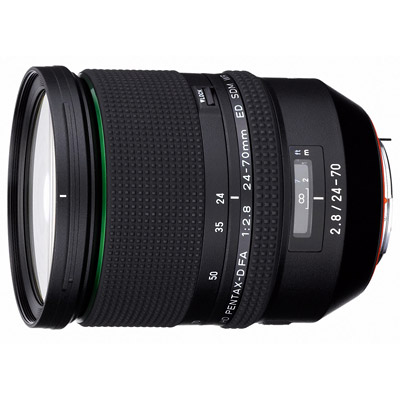 | Pentax D FA 24-70mm f/2.8 ED SDM WR HD Pros: Colors, construction, blurred, WR Cons: Yield at the edges, cost Opinion: This 24-70 is everything you would expect from a standard zoom of its generation. It is based on the optical scheme also used for the Tamron 24-70, which costs less, even half, and is not available with Pentax mount (but does it go?). In this regard, the pentax surcharge is unjustifiable. The rings have a stroke with a constant resistance over the entire length, I really appreciate the fact that the zoom ring is the front one, which allows faster zoom interventions while trying to keep a good frame stability. The optical rendering is generally valid, with some chromatic aberration from time to time and a slight barrel distortion on the lower focal lengths, ordinary administration. In portrait it is very pleasant because it returns beautiful colors and a respectable blur on long focal lengths, as well as well managed even on shorter focal lengths. In the landscape you can see that it makes better in the center even closing the aperture of some stops, on the edges with the 36 megapixels of the K-1 in hyperfocal you almost never get a resolution at the height of the sensor. Good in backlight, limited to the front element that is well ø82mm and therefore more prone to create flare and ghosting. Autofocus not infallible but stable and solid, the times of failed SDM are abundantly over. I would have appreciated a tab on the hood to use more easily a polarizing filter, and some switches of the type AF / MF or additional button, but I assume that they are optional that will be relegated to a possible standard zoom series star future. This, in order not to be a star, remains for the moment the best standard full frame zoom available in Pentax, and actually covers without problems all the situations in which you find yourself using such a lens, reaching or exceeding the sufficiency. sent on October 09, 2021 |
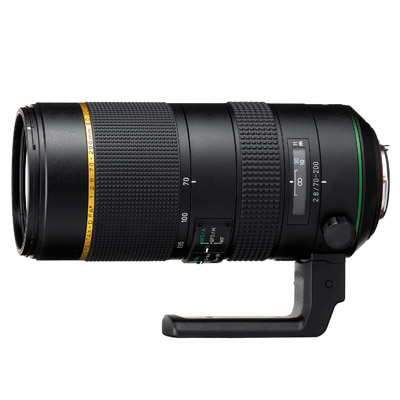 | Pentax-D FA * 70-200mm f/2.8 ED DC AW Pros: Blurred, autofocus, full-aperture sharpness, equipment, robustness Cons: Weight, maximum focal length yield, focus breathing, cost Opinion: This lens is everything you would expect from a star series: no compromise for maximum image rendering. In fact, it is big, heavy (about 1.5kg without a metal foot) and expensive. All necessary prerequisites for all the glass elements that have been used, to obtain excellent images on K-1. We have an exceptional contrast, an excellent resolution for the 36 megapixels of the K-1, which tends to soften above 180mm, vignetting and aberrations as well as very well controlled distortion in almost all focal lengths. The only flaw from the optical point of view is the focus breathing, which leads to sacrificing the focal excursion in a significant way depending on the focusing distance we are having: at the minimum distance according to test it is a bit like having a 60-150. This flaw of focus breathing makes it unsuitable for use in video, where for a change of focus will also change the field framed. It is not a lens obviously designed for video, it is more for photographic hunting and personally I used it a lot in the studio for portraits (as you can see from my gallery). Before buying it you need to deal with its weight: to use it without back problems at the end of the day I had to start training to strengthen the trunk, but I am a bit 'mingherlino. And we certainly will not take it with us on holiday very lightly, unless we have prepared a photographic backpack for the occasion. It is a lens that in 4 years of use has always given me immense satisfaction, but I have always relegated it to days when I knew for sure that sooner or later I would use it. The cost is slightly disproportionate to what it offers: in the competition we find objectives with an equivalent yield that in addition have optical stabilization but cost around the same figure as this star. On the other hand, the problem in Pentax in recent years is precisely this: you do not have valid alternatives cheaper than third parties, unless you look for designs that are 10 years old and beyond that today are non-standard. sent on September 20, 2021 |
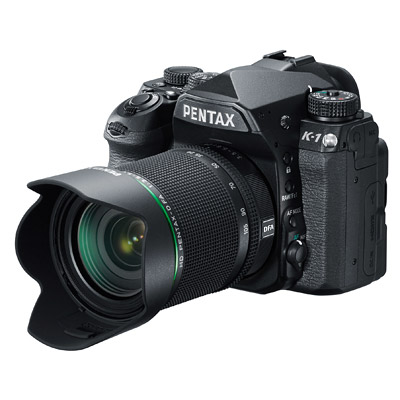 | Pentax K-1 Pros: Image quality, viewfinder, stabilizer, disproportionate amount of functions, dual slot, enhanced flash sync, tiltable LCD, 3 control dial, tropicalization, backward compatibility. Cons: Connectivity, weight. Opinion: If I had 2000 euros for a full DSLR frame, I would not find a better proposal than the K-1. A 36-megapixel reflex with 5-stop stabilized sensor, removable LCD screen, built-in GPS, 3rd multi-mode adjustable dial, wifi, dual slot, water and dust resistant, with white balance between the most advanced of the category. To that figure the only beast found on the genus will have written PENTAX on the pentaprism. RnrnTo start, this camera is designed for a relatively dynamic but not explicitly or implicitly sporty use. This immediately explains the burst of 4.4 fps (6.5 fps if used in aps-c crops) and the autofocus module which, although improved compared to the past models (we have 33 AF points, 31 of which is cross) is not a rocket anymore and does not offer multiple body features of 6000 euros, and I would say well. The uses in which K-1 gives the best are presumably landscape, study, portrait, ceremonial, object, astrophotography (so enjoyof the astrotracer that uses GPS and Shake Reduction), naturalistic up to a certain level, and generally photography in adverse weather conditions. rnrnIt can simply use M in controlling the usual triad to set the shutter, or you can decide to dig between its menus and find out the absurd amount of features it has to offer. Many of these features are possible thanks to the stabilizer: pixel-shift, composition adjustment or sensor shift, astrotracer, horizon correction, anti-aliasing simulator. Then we have a first implementation of electronic live view shutter, horizontal-vertical level in the viewfinder (which I use a lot), different grids visible in the viewfinder, bracketing, HDR in the room ... in the latest firmware even a mode Night LCD that will use only red tones in the menus not to disfigure our eyes in the surrounding darkness and disturb the view. And an additional positional mode B where you can choose a range of shots from 1 to 20 minutes.Also the white balance menu, with MultiWB mode already present on the K-3.rnrn. Mostly, the use I use is in studio and portraiture. I use a lot of horizon correction and tethering to my computer, sometimes wifi on smartphones. Here I can talk about a sore point: USB 2.0 connectivity, with 40mb each RAW files, is a bottleneck. You can work the same well in tethering, but from a model released in 2016 I would finally expect to implement a standard that goes back to at least 2009. Even wifi sometimes loses shots on the speed. RnrnIn the ceremonial area we will often find use a flash. I appreciated in this regard the speed of 1/200 "flash sync, which has always been 1/180" on aps-c models. The P-TTL may behave unexpectedly some times and some EV compensation may be necessary for the flash to expose properly. Some argue that it also depends on the flas modelh used, frankly in past models of Pentax cameras I did not notice any differences in behavior between a Metz and a Pentax FGZ.rnrn File processingability is ... wow. On this point I could say thousands of things, but the truth is that you have to try to work on one in postproduction yourself and understand in person what it means to work a photo shot with K-1. 36 megapixels, however, are so many, and you need a computer that does not hurt, especially for those who use Photoshop with many levels or Lightroom with local adjustments. RnrnAppreciate the proverbial retrocompatibility with vintage bayonet optics K and also M42 via adapter ring. This is a bit of a bit of a concern as I try to buy DA and D FA targets, but it's always fine with those who have a vintage kit, especially with the K-1 with which a 50mm back is actually a 50mm. Finally a camera does not perfect, but a camera bomb. At the same expense it is very difficult to find another room that is as complete and well constructed.rn sent on October 04, 2017 |
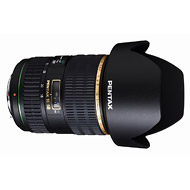 | Pentax SMC DA* 16-50mm f/2.8 ED AL (IF) SDM Pros: Various optional, sharpness, color Cons: chromatic aberrations, rendering the edges, resistant to flare, price Opinion: Four and a half years of honorable service in my hands. It is the best standard zooms currently available for Pentax aps-c, which does not mean it's perfect despite being one star. It has some weaknesses but in general lends itself well to tutto.rnrnPartiamo with the build quality and equipment. It has almost everything that Pentax offers in its lenses (if we exclude the edge over those for 645): SP coating, SDM, the proverbial tropicalization, AF / MF switch on the lens also, focus.rnLa internal construction is typical of the star. In short, it is remarkable and very reliable. Unfortunately has a bad reputation for having an SDM motor which breaks into several pieces, problem solved in the newer games Front obiettivi.rnrnL'elemento is well 10mm larger diameter of the Tamron 17-50, a feature that makes me turn up a little 'nose considered the equal opening and only one millimeter longer excursion focale.rnrnLe rings are nice and fluid. The zoom is a little 'of resistance from 28mm to about salire. The short stroke of the focus ring does not facilitate the manual focus, currently outstanding feature if you run videos. With a little 'of exercise you can tame it, certainly not as fast as in the 50-135 who has a run much lunga.rnFondamentale, again for the video, the presence of quick-shift focusing, always standard on SDM. rnrnOtticamente is complex to describe. The sharpness is also satisfactory at full aperture, and almost at all focal lengths (but as a portraitist are not fussy on the subject, do not pursue the extreme sharpness). The sharpness of the edge decays fairly quickly, unless you stop down the lens of a pair of stops. Vignettes are quite well gestite.rnrnCome previously mentioned in contrast, optically the sore point is the chromatic aberrations. In contrast areas returns a blue fringe quite extensive, so much so that many owners of 16-50, including me, have wondered if they had not in his hands a flawed model. Probably the worst defect of this lens, which tends to disappear by closing at least (repeat at least) two stop the diaframma.rnrnSegue resistance to flare. In fact it is expected given the size of the front element, which strives to manage them, his behavior in this regard I find it average for its category. Simply a little 'attention and are unable to come to capo.rnrnSul side accuses the wide angle barrel distortion, but nothing surprising for a blurred standard.rnrnLo zoom also is average, a satisfactory smoothness for its category, the most hard and tending to the ring on the lower half of the focal. Definitely designed to make better where it is present, or on the long side. The 9-blade diaphragm is appreciated moltissimo.rnrnNel Overall this lens has the strange peculiarity is that various flaws but no real lack. It's nice to use both 16mm to 50mm. It known defects but allows you to deal with any situation then returns with a worthy result. Whatever the medium requires a user, it is able to esaudirla.rnÈ a constatazione less trivial than it seems: the Tamron 17-50, which is in the same category, has a sprained whisker below 20mm, even difficult to be corrected in post-production, and accuses the backlight so heavy, as also struggled to keep up with the focus .rnrnE I close the analysis with one of the most painful notes: the price. On the list we are above 800 euro, when those equivalent third-party come to spend half or less. It is clear that much of the spending goes for options at its disposal. At this point I would recommend it to those who matter to work with the photos that will trip and apart from the yield optical research something rugged and reliable, and that it is able to keep up and not miss shots, otherwise it is better to save and opt for third-party solutions that do not have too much to envy optically (but only optically). sent on March 10, 2017 |
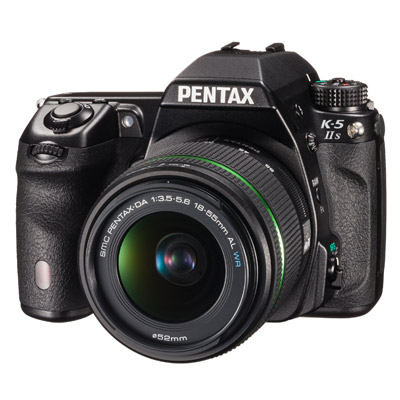 | Pentax K-5 IIs Pros: major upgrade of the K-5, autofocus, LCD gapless, IQ and amazing definition Cons: more expensive counterpart K-5 II, there is no escape to moiree, I would have also liked other updates Opinion: 6ograve; here not ritroveremo.rnrnQui Ricoh, as seems to be tradition for versions II of its models, it has made little upgrade, but they are killer features. The body design remains unchanged except for the functional differences: the gapless LCD, brighter than the classic one, is now more incassato.rnrnE this is the first change, the second is the autofocus, often criticized and actually a bit 'lacking in K-5. The new SAFOX X module differs in the sensitivity of their points that now comes to -3EV and the central point at f / 2.8 allows greater accuracy with very fast lenses, and resolves some known issues in the previous module, which varied depending on the behavior type of ambient light (incandescent or fluorescent). Even the contrast autofocus, in my opinion already handsome on the K-5, is further migliorato.rnHo noticed a drastic improvement in the accuracy on the DA * 55 / 1.4 and the DA * 16-50 / 2.8. The K-5 II / s no longer loses a stroke, and wasNow. And it offers the best of themselves with poor luce.rnrnInfine we come to the key point of the S variant of the K-5 II: the absence of lowpass filter. I recommend this model only to advanced users who know they are going with this particular feature. The definition is greater and valuable, but the artifacts are around the corner and can force frequent interventions in post-production when photographing because garments of fine textures (so most of the photographs of events, reportage and portrait). rnPer me pay the price of moiree it's superior image quality, but for the type of photography that I do take a long time to postprodurre my photos. Not that everyone can feel the same way. I repeat, it is a specialized camera, and those who want the advantages of both technologies depending on the moment can orient themselves on the latest K-3 who own a definitive antialias.rnrnIn filter simulator, another very successful Pentax camera ch and he is also suitable for professional use. sent on January 28, 2017 |
 JuzaPhoto contains affiliate links from Amazon and Ebay and JuzaPhoto earn a commission in case of purchase through affiliate links.
JuzaPhoto contains affiliate links from Amazon and Ebay and JuzaPhoto earn a commission in case of purchase through affiliate links.May Beauty Be Everywhere Around Me